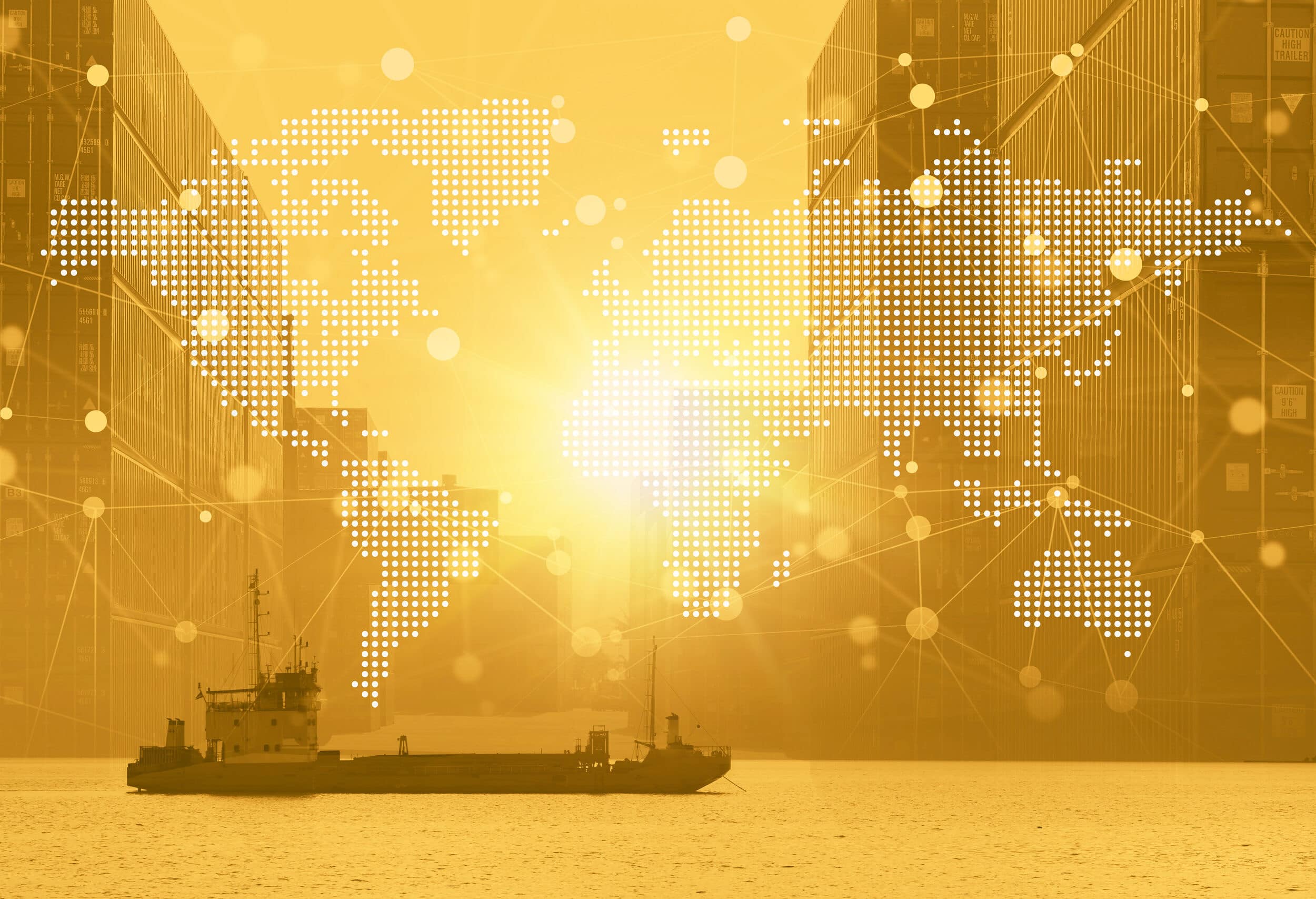Often, global trade news features two of its most prominent participants: the United States and China. The Western World continues to engage in extensive trade with Asia, resulting in an endless webwork of trade policy and even trade wars between participating nations.
Still, how do other areas of the world – like Latin America and the Caribbean (LAC) – fit into the global trade landscape? How do tariffs and non-tariff measures affect trade in Latin America and the Caribbean?
Please note: This article does not aim to either endorse or deprecate current policies or appeal for any policy changes. Instead, this article simply intends to inform on current or existing policies and how changes may potentially affect specific markets from a trade perspective. Within, it quotes from various resources presenting information and outside perspectives related to the topic.
How Latin America and the Caribbean Fit into the Global Trade Architecture
Nations in Latin America and the Caribbean cover large sections of land. Many countries in these regions have commodity-based economies rooted in rich agricultural products like coffee, cereals, sugar, and corn. These fertile lands also produce raw materials like precious metals, natural gas, and crude petroleum.
Traditionally, the Latin American and Caribbean markets have been commodity-focused. While these food and energy resources are vitally important, these areas are less frequently featured in the global trade spotlight. Why? Several factors are at play, but the most significant is technology.
Technology is at the center of today’s global trade market. Yet, while some parts of Latin America and the Caribbean are excelling and growing their technological sector, some policymakers observe that others are lagging.
“Latin America’s economy overall remains highly dependent on natural resources exports, which make it vulnerable to downturns in the commodities cycle,” says Reuters.
Moreover, technological innovation is often curbed by the lack of digitization, making it harder to compete in an increasingly tech-driven global market.
“About 200 million people lack access to basic digital infrastructure, and for many more, such access is of poor quality or too expensive,” observes the World Bank.
Still, the Latin American and Caribbean region faces other considerations impacting trade – tariffs and non-tariff measures.
Trade Policies Affecting Trade Integration in Latin America and the Caribbean
In global trade, tariffs vary based on the country of origin and destination. In addition, some nations within the LAC region have trade agreements with other countries.
For example, the U.S.-Panama Trade Agreement (TPA) went into effect in 2012. “The TPA is a comprehensive free trade agreement that provides elimination of tariffs and removes barriers to U.S. services, including financial services,” says the Office of the United States Trade Representative. “It also includes important disciplines relating to customs administration and trade facilitation, technical barriers to trade, government procurement, investment, telecommunications, electronics commerce, intellectual property rights, and labor and environmental protection.”
The United States has several other free trade agreements and tariff programs with select LAC nations. However, in many cases, tariffs and non-tariff measures remain in place to regulate trade with the region.
Tariff Measures Impacting Trade
The U.S. uses the Harmonized Tariff Schedule (HTS) to determine tariffs on specific products. Therefore, before exporting a product to the United States, exporters must correctly classify it so they can pay the corresponding tariffs.
The United States International Trade Commission’s tariff database allows traders to use search tools to determine proper product classification and determine which tariffs apply.
Non-Tariff Measures Impacting Trade
Beyond standard tariffs and taxes on imports, exporters also face non-tariff measures. These added regulations impose various standards for export based on specific products.
“Non-tariff measures (NTMs) are policy measures other than tariffs that can potentially have an economic effect on international trade in goods,” explains the United Nations Conference on Trade and Development. “They are increasingly shaping trade, influencing who trades what and how much. For exporters, importers, and policymakers, NTMs represent a major challenge. Though many NTMs aim primarily at protecting public health or the environment, they also substantially affect trade through information, compliance, and procedural costs.”
What are some of these non-tax barriers?
Non-tariff measures include regulations for:
- Labeling/packaging
- Sanitization and health
- Product quotas
- Licensing, certifications, and permits
- Subsidies
- Product classification
- Product testing
- More
In developing countries, the added cost of these unseen trade barriers can render exporting not worth the time and money, especially for small businesses. Compliance with NTMs costs precious time and resources that many Latin American and Caribbean companies cannot afford to spare. Additionally, lengthy administration processing, corruption, and other hang-ups can reduce a trader’s ROI.
At the same time, many lawful trade regulations intend to promote safety and standardization across multinational markets. What, then, would be the potential benefits and drawbacks of slashing tariffs and reducing non-tariff measures?
Pros and Cons of Removing Tariffs and Streamlining Non-Tariff Measures
Easing trade restrictions promotes globalization. However, globalization in itself can carry both positive and negative connotations.
“Globalization is driven by international trade and aided by information technology,” observes National Geographic. “There are pros and cons to globalization, all of which have economic, social, political, and cultural impacts.”
Despite some potentially negative consequences, some experts are optimistic about the implications of reducing tariffs and non-tariff measures.
One extensive 2021 study by M. Dolabella and J. E. Durán L. is entitled Integrating Latin America and the Caribbean: Potential Effects of Removing Tariffs and Streamlining Non-tariff Measures. The study “analyses the impact of reducing intraregional trade barriers in the context of a free trade agreement in Latin America and the Caribbean. It concludes that a full tariff reduction and elimination of non-tariff measures would have positive impacts on trade, production, welfare, and employment across the region.”
In theory, cutting tariffs and slackening non-tariff measures would promote job creation, innovation, and diversification. Still, others worry about the impacts of increased globalization on the region’s respective cultures, domestic markets, and environment.
Granted, even the most experienced economists and policymakers would find it impossible to anticipate every potential implication of a new trade policy. Global trade is so complex that there are too many factors to calculate precisely how a given nation’s market will fare under the new policy.
If your company is involved in global trade, what tools can help you mitigate risk in an ever-changing landscape?
Export and Product Classification Management for Trade with Latin America and the Caribbean
To ensure compliance, all traders need sophisticated global trade management tools. At OCR Global Trade Management, we offer a powerful web-based solution to help small businesses and enterprise-level companies alike mitigate risk and maximize profitability.
Specifically, our Product Classification module gives corporations the help they need to accurately and efficiently determine global product classifications or ECCN numbers. In addition, all processes are logged and auditable, so exporters can ensure all their bases are covered.
Get in touch to learn more about our intuitive global trade management software.
Reference Links:
- https://www.reuters.com/article/us-latam-summit-barcena/latin-america-falling-behind-in-tech-u-n-regional-head-idUSKBN1AR1GE
- https://blogs.worldbank.org/ppps/latin-america-and-caribbeans-digitization-time-scale-investments
- https://ustr.gov/trade-agreements/free-trade-agreements/panama-tpa
- https://dataweb.usitc.gov/tariff/programs
- https://dataweb.usitc.gov/tariff
- https://unctad.org/topic/trade-analysis/non-tariff-measures
- https://www.nationalgeographic.org/activity/the-debate-over-globalization/student/
- https://repositorio.cepal.org/handle/11362/46649
- https://www.ocr-inc.com/productclassification/
- https://www.ocr-inc.com/contact-us/



